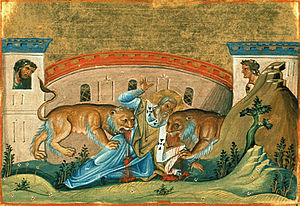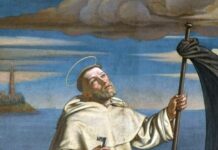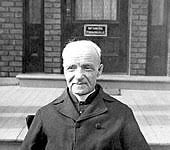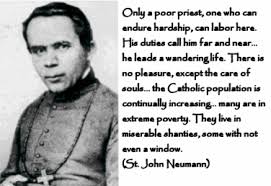As we are celebrating Trinity Sunday my mind and heart cannot not ruminate and contemplate the beauty of this outstanding mystery, the Holy Trinity, of which none plumb the depths,
The Catechism of the Catholic Church is so right when it squarely tells us: The Trinity is a mystery of faith in the strict sense, one of the “mysteries that are hidden in God, which can never be known unless they are revealed by God”. To be sure, God has left traces of his Trinitarian being in his work of creation and in his Revelation throughout the Old Testament. But his inmost Being as Holy Trinity is a mystery that is inaccessible to reason alone or even to Israel’s faith before the Incarnation of God’s Son and the sending of the Holy Spirit (no.237).
And it is precisely to these traces of knowledge about the Trinity that the following reflections will be dealing with. As the title shows already it shall be presenting the contribution of some early Christian writers on this foundational subject of our faith which is the Holy Trinity.
According to the Didache (ca. 100 a.d.) liturgically the mention of the Name of each of the Three Persons of the Trinity is essential for a baptism to be valid. After the foregoing instructions, baptize in the name of the Father, and of the Son, and of the Holy Spirit, in living [running] water. . . . If you have neither, pour water three times on the head, in the name of the Father, and of the Son, and of the Holy Spirit (Didache 7:1 [A.D. 70]). Personally speaking this text powerfully reminds me of what we find written in the Catechism itself on this subject: Christians are baptized in the name of the Father and of the Son and of the Holy Spirit: not in their names, for there is only one God, the almighty Father, his only Son and the Holy Spirit: the Most Holy Trinity (no.233).
In Ignatius of Antioch (+110) the Trinity emerges in his greeting, which is also an affirmation of the one faith of the early Church in the triune God, as his letter to the Ephesians attests. Within the same letter we furthermore encounter the explicit belief of Christ’s incarnation in the holy womb of Mary. “[T]o the Church at Ephesus in Asia . . . chosen through true suffering by the will of the Father in Jesus Christ our God” (Letter to the Ephesians 1 [A.D. 110]). “For our God, Jesus Christ, was conceived by Mary in accord with God’s plan: of the seed of David, it is true, but also of the Holy Spirit” (ibid., 18:2).
With Justin the Martyr (+165 a.d.) again we have the belief in the Trinity which is being manifested within the liturgical assembly. “We will prove that we worship him reasonably; for we have learned that he is the Son of the true God himself, that he holds a second place, and the Spirit of prophecy a third. For this they accuse us of madness, saying that we attribute to a crucified man a place second to the unchangeable and eternal God, the Creator of all things; but they are ignorant of the mystery which lies therein” (First Apology 13:5–6 [A.D. 151]). Even here we can appreciate, once more, the truth of the Latin maxim Lex orandi, Lex credendi, Lex vivendi. In other words, as we worship, so we believe, so we live.
For Theophilus of Antioch (+185) the Trinity is likened to the three days before the luminaries were created. “It is the attribute of God, of the most high and almighty and of the living God, not only to be everywhere, but also to see and hear all; for he can in no way be contained in a place. . . . The three days before the luminaries were created are types of the Trinity: God, his Word, and his Wisdom” (To Autolycus 2:15 [A.D. 181]). While Irenaeus (+202), deeply embedded in an ecclesiological context, can easily affirm the very faith of the Church of the Trinity, a Church, of course, which is in every corner of the globe! It is in her belief in the Trinity that the Church is one! “For the Church, although dispersed throughout the whole world even to the ends of the earth, has received from the apostles and from their disciples the faith in one God, the Father Almighty . . . and in one Jesus Christ, the Son of God, who became flesh for our salvation; and in the Holy Spirit” (Against Heresies 1:10:1 [A.D. 189]).
The ecclesiastical writer of the third century Tertullian (+220) helps us notice the affirmation of the One God as well as the monarchy of the Father, from whom sprouts the existence of the two other trinitarian Persons, the Son and the Holy Spirit. “We do indeed believe that there is only one God, but we believe that under this dispensation, or, as we say, oikonomia, there is also a Son of this one only God, his Word, who proceeded from him and through whom all things were made and without whom nothing was made. . . . We believe he was sent down by the Father, in accord with his own promise, the Holy Spirit, the Paraclete, the sanctifier of the faith of those who believe in the Father and the Son, and in the Holy Spirit” (Against Praxeas 2 [A.D. 216]).
Then, Tertullian goes on by saying that the Trinity works within the confines of oikonomia, in other words God’s plan to create and redeem the world. It is through this plan that we can better grasp what the Trinity is. In this sense, we can better appreciate the unity in degree, form and kind of One Trinitarian God. He writes: “And at the same time the mystery of the oikonomia is safeguarded, for the unity is distributed in a Trinity. Placed in order, the three are the Father, Son, and Spirit. They are three, however, not in condition, but in degree; not in being, but in form; not in power, but in kind; of one being, however, and one condition and one power, because he is one God of whom degrees and forms and kinds are taken into account in the name of the Father, and of the Son, and of the Holy Spirit” (ibid.).
Conscientiously so, Tertullian cautions us to keep rigorously the rule of the Church’s faith concerning our belief in the Trinity. If we observe it we are no longer confused in our belief of the Trinity. Keep always in mind the rule of faith which I profess and by which I bear witness that the Father and the Son and the Spirit are inseparable from each other, and then you will understand what is meant by it. Observe now that I say the Father is other [distinct], the Son is other, and the Spirit is other. This statement is wrongly understood by every uneducated or perversely disposed individual, as if it meant diversity and implied by that diversity a separation of Father, Son, and Holy Spirit” (ibid., 9).
Finally, Tertullian also helps us understand that it is the trinitarian communion which produces meaningful Persons, although distinct from one another through their personhood. They are one essence in three Persons. “Thus the connection of the Father in the Son, and of the Son in the Paraclete, produces three coherent persons, who are yet distinct one from another. These three are, one essence, not one person, as it is said, ‘I and my Father are one’ [John 10:30], in respect of unity of being not singularity of number” (ibid., 25).
The great Origen (+253) is of the view that the Holy Trinity is timeless and ageless. “For we do not hold that which the heretics imagine: that some part of the being of God was converted into the Son, or that the Son was procreated by the Father from non-existent substances, that is, from a being outside himself, so that there was a time when he [the Son] did not exist” (The Fundamental Doctrines 4:4:1 [A.D. 225]). “For it is the Trinity alone which exceeds every sense in which not only temporal but even eternal may be understood. It is all other things, indeed, which are outside the Trinity, which are to be measured by time and ages” (ibid.).
For Hippolytus (+235), Jesus Christ, the Word, is the Son of God himself. “The Word alone of this God is from God himself, wherefore also the Word is God, being the being of God” (Refutation of All Heresies 10:29 [A.D. 228]).
Pope Dionysius (+268) makes the following statements about the Trinity. First, the Holy Trinity, who is “the most sacred proclamation of the Church of God” is not “three powers, distant substances and three godheads” (Letter to Dionysius of Alexandria 1 [A.D. 262]). Second, “The divine Trinity must be gathered up and brought together in one, a summit, as it were, I mean the omnipotent God of the universe” (ibid., 1–2). Third, “we must believe in God, the Father Almighty; and in Christ Jesus, his Son; and in the Holy Spirit; and that the Word is united to the God of the universe. ‘For,’ he says, ‘The Father and I are one,’ and ‘I am in the Father, and the Father in me’” (ibid., 3).
The great Augustine of Hippo (+430) says that from the biblical revelation of the Old and New testaments the Trinity of the Father, Son and Holy Spirit is one and the same substance, makes up a divine unity, each Person equal to the other Persons as one God. “All the Catholic interpreters of the divine books of the Old and New Testaments whom I have been able to read, who wrote before me about the Trinity, which is God, intended to teach in accord with the Scriptures that the Father and the Son and the Holy Spirit are of one and the same substance constituting a divine unity with an inseparable equality; and therefore there are not three gods but one God, although the Father begot the Son, and therefore he who is the Son is not the Father; and the Holy Spirit is neither the Father nor the Son but only the Spirit of the Father and of the Son, himself, too, coequal to the Father and to the Son and belonging to the unity of the Trinity” (The Trinity1:4:7 [A.D. 408]).
Finally, Fulgence of Ruspe (+ ca., 527), says that the Father is a Person, the Son is a Person and the Holy Spirit is a Person. Having said that, they are of one nature. “See, in short you have it that the Father is one, the Son another, and the Holy Spirit another; in Person, each is other, but in nature they are not other. In this regard he says: ‘The Father and I, we are one’ (John 10:30). He teaches us that one refers to their nature, and we are to their Persons. In like manner it is said: ‘There are three who bear witness in heaven, the Father, the Word, and the Spirit; and these three are one’ (1 John 5:7)” (The Trinity 4:1–2 [c. A.D. 515]).
Moreover, Fulgence says that “God himself is a Trinity of Persons and one in nature” (The Rule of Faith 4 [c. A.D. 523). He thus explains: “But in the one true God and Trinity it is naturally true not only that God is one but also that he is a Trinity, for the reason that the true God himself is a Trinity of Persons and one in nature. Through this natural unity the whole Father is in the Son and in the Holy Spirit, and the whole Holy Spirit, too, is in the Father and in the Son. None of these is outside any of the others; because no one of them precedes any other of them in eternity or exceeds any other in greatness, or is superior to any other in power” (The Rule of Faith 4 [c. A.D. 523).
From this brief overview about the Most Holy Trinity, as seen from the early Christian writers, I learned that the Church’s belief, especially as a clarification against the heretics, her liturgical praxis and even creation itself point to the unfathomable mystery of the Holy Trinity.










